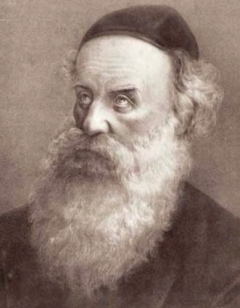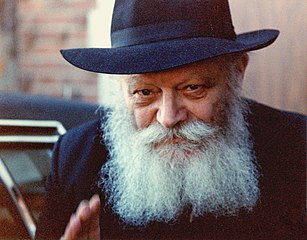No group has succeeded so dramatically in drawing lapsed or alienated Jews back into the orthodox fold as the Lubavitch Chassidim. Today the Lubavitch are found in New York, Moscow, Tel Aviv and almost every city of the world, even far-flung outposts like Kathmandu and Kazakhstan.
Lubavitch practice place special emphasis on happy festivals like Chanukah and Purim. It also argues that non-Jews can reach salvation by obeying the seven Noachide Laws. While stressing strict Jewish adherence to the 613 commandments (mitzvot), it welcomes technology as proof of divine genius and as a means to propagate its message.
Lubavitch Chassidism is named after the town where most of its early followers lived. It is one of very few Chassidic ‘courts’ to originate in Lita (Lithuania, Latvia and Belarus). Lita was the home of the opposition to Chassidim, called the Mitnagdim. Lubavitch followers later settled in Safed, Hebron and Jerusalem in Ottoman Palestine.

The first Lubavitcher Rebbe was Shneur Zalman of Lyady (1745-1812) a disciple of Dov Baer, the Maggid of Medzherich. Shneur Zalman’s great work is Likutei Amarim (‘Collections of Sayings’), popularly known as ‘Tanya‘ (‘There is a Teaching’). This text interprets the Kabbalah and outlines the group’s doctrine. Tanya is mandatory reading at Lubavitch yeshivot (seminaries), alongside the Torah and Talmud.
Lubavitch Chassidism is also called Chabad, an acronym of three kabbalistic qualities: chochma (wisdom), bina (understanding) and da’at (knowledge). This juxtaposition denotes the group’s intellectualism. Chabadniks (as followers are known) spurn asceticism, but believe in the values of devekut (attachment), hitlahavut (enthusiasm) and kavanah (devotion).
The sixth Lubavitcher Rebbe, Yosef Yitzhak Schneersohn (1880-1950) was imprisoned by Bolsheviks in 1927, and narrowly escaped Nazi-occupied Poland with a few followers in 1940. He set up new offices on Eastern Parkway, Crown Heights, Brooklyn and in New York City.

Menachem Mendel Schneerson (b.1902), a brilliant Torah scholar and engineering graduate from the Sorbonne, succeeded his late father-in-law as Rebbe in 1950. Like his predecessor, the seventh Rebbe encouraged massive outreach. Mobile mitzvah-tanks, study sessions, joyous farbrengen (gatherings) and welfare centres turned Chabad into a movement of 200,000 core devotees and many affiliates.
Controversially, this Rebbe became a kingmaker in Israeli politics – even though he never visited the country. Strongly opposed to territorial compromise with Arabs, he ensured the failure of Shimon Peres’ bid to form a government in 1990. Schneerson suffered a debilitating stroke in his final years. Increasingly, followers hailed him as the moshiach (messiah). He eventually died in 1994, leaving no children, and hence no dynastic successor. Some Chabadniks formed a breakaway messianic faction after 1994, called Beis Menachem (House of Menachem).
Lubavitch Chassidism has flourished despite the death of Schneerson. Its dalliance with messianic and eccentric interpretation of some Jewish customs has led other orthodox Jews to question its methods. Nevertheless, Lubavitch shlichim (emissaries) have revived Jewish worship worldwide.
Videos
In the above video Dr Henry Abramson, who holds a PhD in Jewish History, discusses Rabbi Schneur Zalman, the founder of Lubavitch Chassidism and its first Rebbe.
In the above video Dr Henry Abramson talks about Rabbi Yosef Yitzhaak Schneersohn, the 6th Rebbe, who led the Lubavitch movement from 1920 until his death in 1920.
In the above video Dr Henry Abramson discusses the 7th Lubavitcher Rebbe, Rabbi Menachem Mendel Schneerson, who led the movement from 1950 until his death in 1994, and shaped the movement into the world’s largest Jewish outreach movement and best known Chassidic sect.


